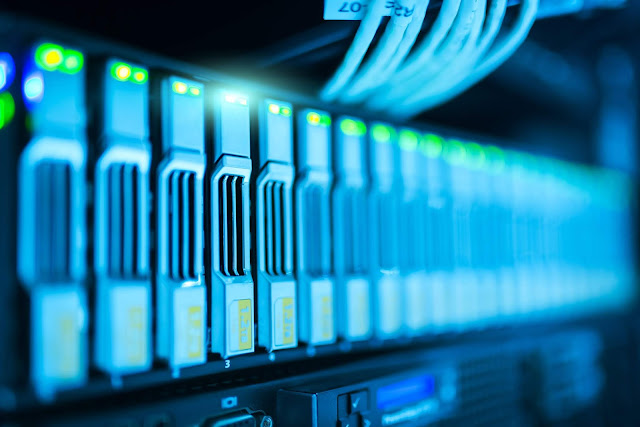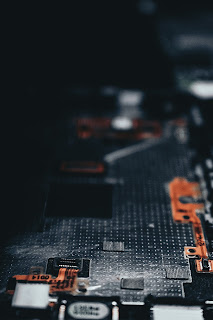
What is the Internet of Things(IoT)?
The Internet of Things hints at a connection of billions of
complex gadgets like electronics, sensors, gateways, actuators and platform
centers. These important devices associate and connect via a wireless system.
Connected objects (or things) share information and operate without
intercession by people.
Massive use of Internet of Things has been observed for the
first time in manufacturing companies to execute autonomy and reduce creation
costs. Later, its applications turned to an increasingly commercial and general
use.
In any case, the potential results that the Internet of
Things bring to the automotive industry are extremely colossal. Various use
cases of the automotive Internet of Things have emerged that revolutionize the way
people associate with their vehicles. We have to explore them individually:
Why should connected devices share data?
An argument has been raised that it is not because something
can be connected to the Internet that it should be, but each device collects
data for a specific purpose that may be useful to a buyer and have an impact on
the economy as a whole.
In industrial applications, product line sensors can
increase efficiency and reduce waste. A study estimates that 35% of American
manufacturers already use data from smart sensors in their configurations. The
American Firm Concrete Sensors has created a device that can be inserted into
concrete to provide data on the state of the material, for example.
Evans says
"IoT gives us the opportunity to be more efficient in the way we do things, which saves us time, money and often emissions in the process." It allows businesses, governments and public authorities to rethink the way they provide services and produce goods.
Gorski says
The quality and breadth of data on the Internet of Things creates an opportunity for much more contextualized and responsive interactions with devices to create the potential for change." It "doesn't stop at a screen.
Where does the Internet of Things go next?

Even those who bought one of the many smart home products -
light bulbs, switches to motion sensors - will attest to the fact that Internet
of Things is in its infancy. Products do not always connect easily to each
other and important security issues need to be addressed.
A report from Samsung says the need to secure all connected
devices by 2020 is "critical". The society's document on the open
economy says that "there is a very clear danger that technology is ahead
of the game". The firm said more than 7.3 billion devices will need to be
secured by their manufacturers before 2020.
"We envision a future in which businesses will engage
in digital Darwinism, using Internet of Things, Artificial intelligence and
machine learning to evolve quickly in ways we have never seen before,"
said Brian Solis, from the Altimeter group, which contributed to the research.
Internet of Things botnets, created using a network of
outdated devices, took large websites and services offline in 2016. A Chinese
company later recalled 4.3 million insecure connected cameras. The ease of
terminating the Internet using Internet of Things devices was revealed when,
instead of malicious intent, the botnet was found to be created to play
Minecraft.
Internet of Things in Automotive Industry
Connected Cars
Connected vehicles are not new. Truth be told, as a Gartner
estimate indicates, there will be more than 250 million connected vehicles
worldwide before the end of 2020. These cars are associated on an Internet of
Things organization called CV2X (cellular vehicle at all) which connects
vehicles and shiny transport frames with each other.
Connected vehicles encourage the rapid transmission of
information and increase the reaction time of drivers through better vehicle
matching. Due to the association of the vehicle with various objects, the V2X
is subdivided into four classifications:
Vehicle to Vehicle (V2V)
 The Vehicle to Vehicle association allows vehicles in a
nearby range to communicate information. The information mainly establishes
data identified with location, speed and elements. The Vehicle to Vehicle (V2V)
association helps prevent accidents and allows emergency vehicles such as
ambulances and fire trucks to move easily in traffic.
The Vehicle to Vehicle association allows vehicles in a
nearby range to communicate information. The information mainly establishes
data identified with location, speed and elements. The Vehicle to Vehicle (V2V)
association helps prevent accidents and allows emergency vehicles such as
ambulances and fire trucks to move easily in traffic.Vehicle to Infrastructure (V2I)
The Infrastructure to Vehicle association refers to a system
of vehicles and road foundations. The framework in Vn 2I basically includes
traffic lights, lane markings and toll stations. Infrastructure to Vehicle (V2I)
generally promotes traffic flow and avoids long queues at toll stations or
petroleum pumps.
Vehicle to Pedestrian (V2P)
Thanks to the use of a mobile application, a pedestrian can
also interface with CV2X organizer. He can use this application to find near
cabins and filter the estimated appearance time for travels. They can also join
the framework of the pedestrian walking system and modify the road signs on a
road.
Vehicle to Network (V2N)
The Intelligent Transportation System (ITM) and the Weather
Forecast Division can also partner with the system to alert drivers if weather
conditions change or a road accident occurs. In addition, a vehicle can be
paired with smartphones, allowing the driver to use voice commands to work on
the vehicle's music and GPS while driving.
Infotainment and Telematics
The on-board Wi-Fi capacities controlled by 4G LTE have
reinforced the telematics functionalities for the automobile based on the Internet
of Things. Telematics alludes to the long transmission of computerized
information. Using vehicle telematics, a vehicle owner can keep a hawk-eye on
their vehicle, even from a distance.
Thanks to a dashboard with a smartphone, vehicle owners can
be guaranteed consistent safety, recognition and security. External sensors and
cameras monitor the status of vehicles and send the information to a mobile application.
The telematics system with the real-time frame seems a
warning in the owner's smartphone if someone tries to forcefully enter the
vehicle without proper access. The smart car with Internet of Things also
quickly calls the relevant specialists such as the ambulance or the fire brigade
in the event of a crisis.
Wi-Fi capabilities have also offered an ascent to smart
infotainment frames as well as other highlights of the car. The owner can
interface various gadgets like the music system and the GPS in a vehicle with
his smartphone and use them indirectly. Currently, there are various integrated
and third-party applications that a person can use to associate their vehicle
with a mobile.
The accessibility of voice commands in these applications
allows an individual to play his favorite music, broadcast a video or make
calls without lifting a finger. The GPS and GNSS systems in the infotainment
frames also offer onboard navigation and comprehensive data on petroleum
pumps, cafes and various nearby interests.
Machine Learning Algorithms
Machine learning algorithms can dissect information
accurately. This works admirably for car manufacturers in different ways and
can offer important information in the regions, including maintenance, consumer
loyalty, compliance with safety rules, etc. For example, the Internet of Things
can be used to integrate an on-board monitoring device which can have sensors
to judge the condition and performance of the vehicle battery. Machine Learning
warrants that the information is analyzed and that the report and the result
reveal when the battery needs to be checked, repaired or replaced.
Automotive Conclusion
The use of Internet of Things in the automotive industry can
be endless. The Internet of Things and the latest technology are transforming the
entire automotive industry.
Progress in this area has given rise to the pioneering
development of the automobile with regard to associated and automated cars. Its
use has improved the overhaul and maintenance capabilities of cars and
introduced new entertainment mechanisms. In addition, vehicle telematics allows
long-term data transmission, which has contributed to the development of an Internet
of Things technology fleet management system. Solutions based on Internet of
Things are at the center of innovation in premonitory maintenance which will
help us to forget spontaneous stops and glitches while driving.
Internet of Things(IoT) applications in the automotive
sector are gradually developing. As the innovation of the Internet of Things
improves, more and more sophisticated car use cases will emerge, which will
change the way we collaborate with our vehicles.
Privacy Implications
Anything connected to the Internet can be hacked, Internet
of Things products are no exception to this unwritten rule. Unsecured Internet
of Things systems have led toymaker VTech to lose videos and photos of children
using its connected devices.
There is also the issue of surveillance. If each product
becomes connected, there is a potential for unrestrained user observation. If a
connected refrigerator tracks food use and consumption, takeout might be
targeted at hungry people who don't have food. If a smartwatch can detect when
you have sex, this prevents people with these data from using them against the
wearer of the watches.
"In the future, intelligence services could use [Internet
of Things(IoT)] for identification, surveillance, tracking, location and
targeting for recruitment, or to access networks or identifying information of
users, "James Clapper, US executive or national intelligence said in 2016.
Wikileaks then said the CIA was developing security feats for a connected
Samsung TV.
Reliable Standards
At the heart of building a large, reliable Internet of
Things network is an important issue: compatible standards. Connected objects
must be able to talk to each other to transfer data and share what they record.
If they all operate according to different standards, they find it difficult to
communicate and share. The Institute of Electrical and Electronics Standards
Association lists a large number of standards being developed and worked on for
different applications.
"Additional needs are emerging for
standardization," says the Internet Society. If standardization occurs, it
will allow more devices and applications to be connected.
In an attempt to resolve this problem enterprise-wide,
Microsoft has introduced its own system for Internet of Things devices. Called Internet
of Things Central, TechCrunch reports that the system provides businesses with
a central, managed platform for configuring Internet of Things devices.
Microsoft says the system will simply be creating Internet of Things networks.
Gorski described Internet of Things, even among those with
the most experience with the concept, as a "relatively immature
market", but said 2016 may have been a turning point. The Hypercat
standard is now supported by Intel, Amey, ARM, Bae Systems and Accenture, and
companies are currently agreeing on a format for "exposing collections"
of URLs, for example.
"In the short term, we know that [Internet of Things]
will have an impact on everything that is costly not to intervene," said
Evans. "And it will be for simpler everyday problems - like finding a
parking space in busy areas, hooking up your home entertainment system and
using your fridge's webcam to check if you need more milk on the way return.
In the end, what makes it exciting is that we don't yet know the exact use cases and simply that it has the potential to have a major impact on our lives.






0 Comments